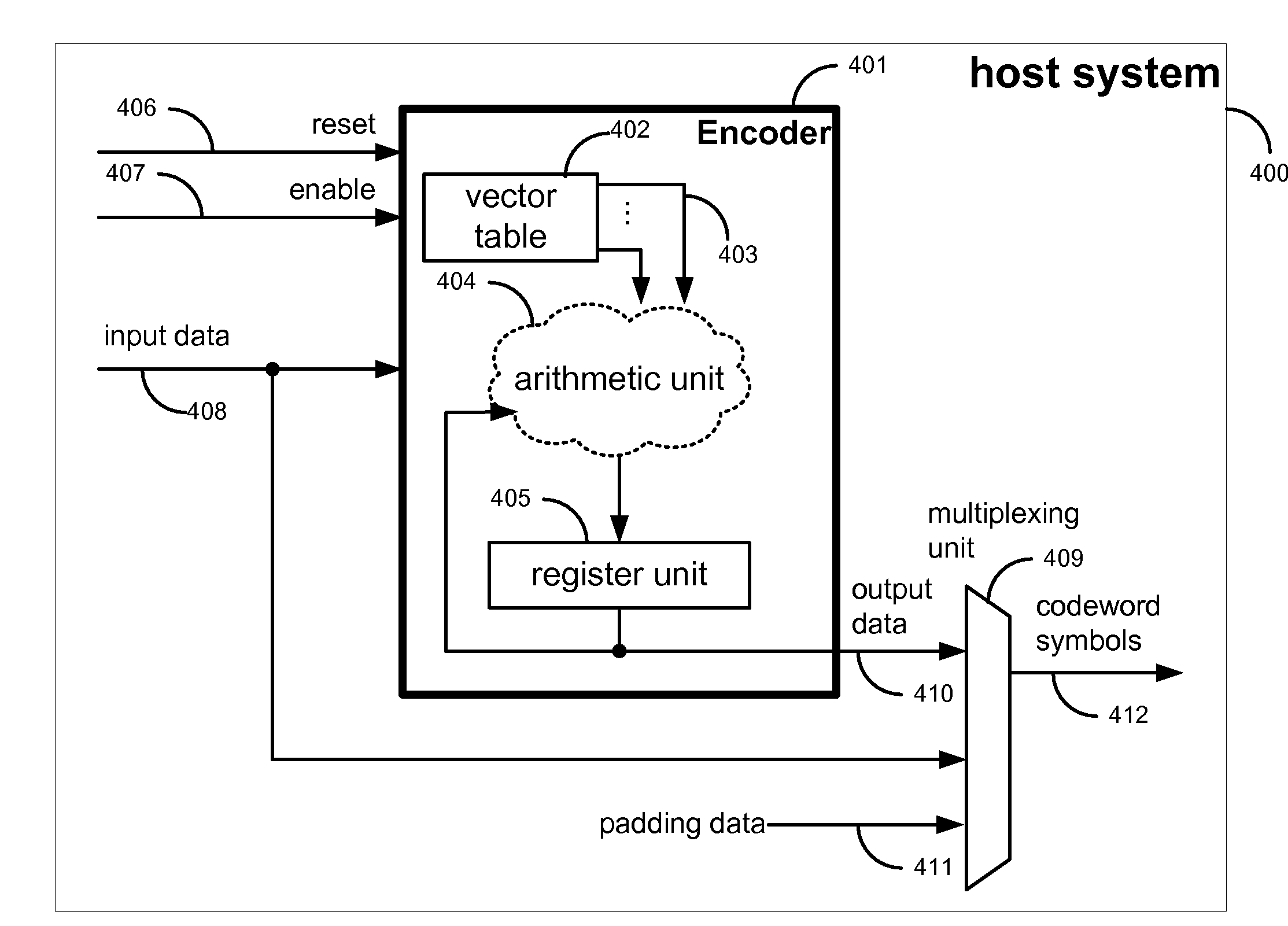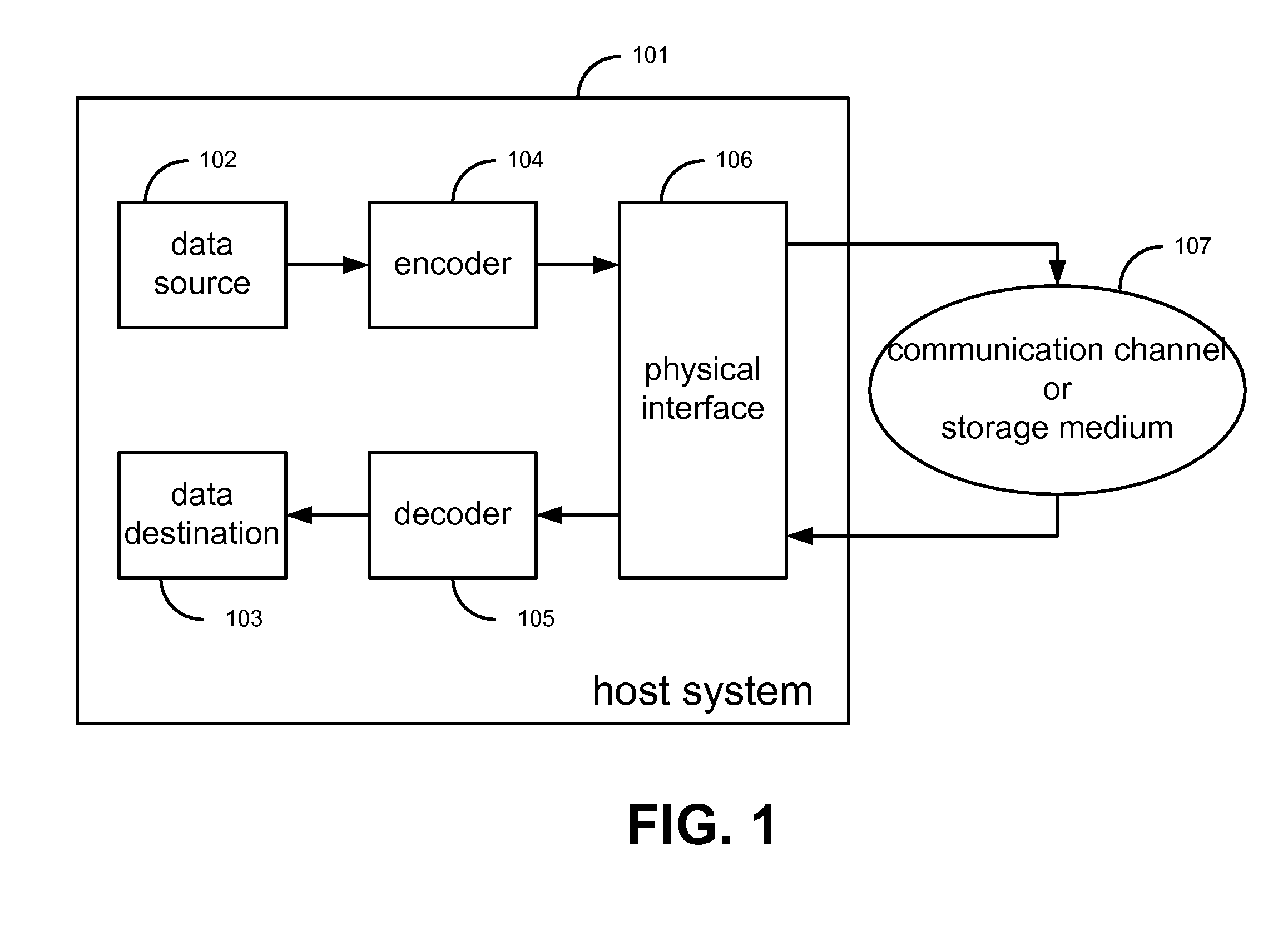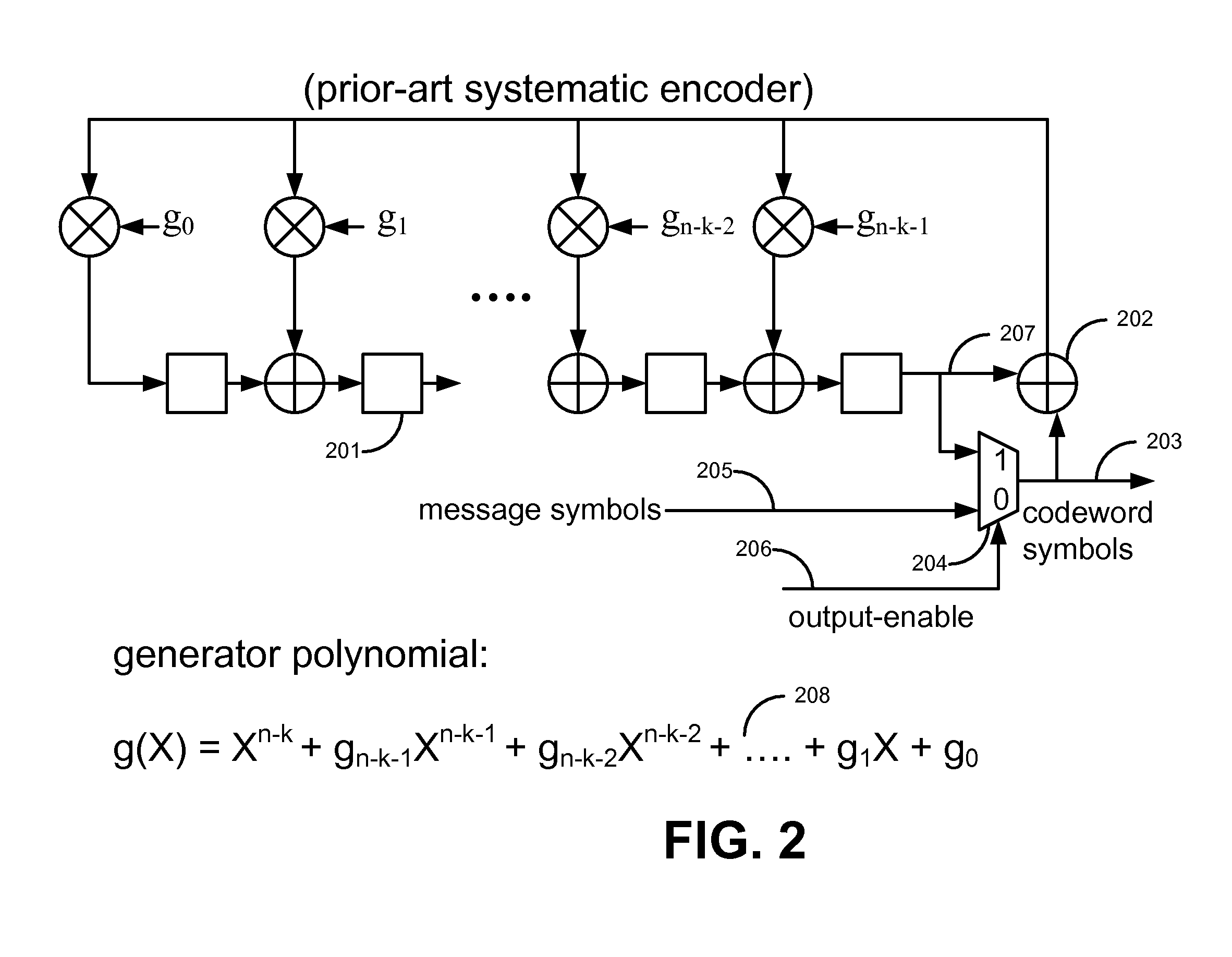Methods and apparatus for encoding and decoding cyclic codes by processing multiple symbols per cycle
a cyclic code and cycle technology, applied in the field of encoding and decoding of cyclic codes, can solve the problems of high clock rate, unachievable, undesirable or unachievable, etc., and achieve the system complexity of providing varying clock rates, and the error characteristics of the channel/medium
- Summary
- Abstract
- Description
- Claims
- Application Information
AI Technical Summary
Problems solved by technology
Method used
Image
Examples
first embodiment
[0042]The Encoder of the first embodiment is described as follows. As illustrated in FIG. 4, the Encoder comprises a vector table (402), a register unit (405) and an arithmetic unit (404). The vector table outputs M vectors (403) each of which comprises the n−k coefficients of a pre-calculated remainder polynomial obtained from dividing a corresponding Identity Polynomial (defined below) by the generator polynomial g(X) of the cyclic code. The register unit is capable of storing n−k symbols. The Encoder further comprises an input data signal (408) via which the host inputs M message symbols per cycle to the Encoder, an output data signal (410) outputting the content of the register unit as the output of the Encoder, a reset signal (406) which clears the register unit to zero when asserted, and optionally an input enable signal (407) which enables the register unit to latch the output of the arithmetic unit at the end of a cycle when asserted. Before the encoding operation begins, th...
third embodiment
[0074]The Decoder of the third embodiment is described as follows. As illustrated in FIG. 10, the Decoder comprises an input “data size” signal (1025) via which the host inputs the value of Mj in each cycle of the decoding operation, and a multiplexing unit (1026) which, with its select input coupled with the input data size signal, outputs M+1 vectors (1015 to 1017), whereby Mj+1 of these output vectors are selected from the Root Vectors while the other (M−Mj) output vectors are zero vectors. The M+1 vectors output by the multiplexing unit may be indexed from 0 to M, whereby the output vectors indexed 0 to M−1 (1015, 1016) are sent to the M scalar multipliers (1012, 1013) to be each multiplied by one of the received symbols (1009, 1010) while the output vector indexed M (1017) is sent to the vector multiplier (1014) to be multiplied symbol-wise with the Register Feedback Vector (1007). For a particular value of Mj, the multiplexing unit selects the Mj+1lowest Root Vectors, i.e. Roo...
fourth embodiment
[0077]The Encoder of the fourth embodiment is described as follows. FIG. 11 illustrates an exemplary Encoder, wherein the vector table (1102) is a programmable memory device coupled with an input vector table loading signal (1124) via which the host may load a different set of IR Vectors into the vector table before the encoding operation of a codeword.
[0078]Preferably, the cyclic codes for which this Encoder is to be configured have the same symbol size wherein the symbols may be represented by the same Galois Field, such that the Galois Field arithmetic operators such as the scalar multipliers operate correctly for different cyclic codes. Further, the exemplary Encoder illustrated in FIG. 11 has the structural capacity for cyclic codes where the parity of each codeword has the maximum length of n−k symbols. More specifically, the vector table has the capacity of storing M IR Vectors of n−k symbols, each signal (1115 to 1117) carrying an IR Vector is n−k symbols wide; the scalar mu...
PUM
 Login to View More
Login to View More Abstract
Description
Claims
Application Information
 Login to View More
Login to View More - R&D
- Intellectual Property
- Life Sciences
- Materials
- Tech Scout
- Unparalleled Data Quality
- Higher Quality Content
- 60% Fewer Hallucinations
Browse by: Latest US Patents, China's latest patents, Technical Efficacy Thesaurus, Application Domain, Technology Topic, Popular Technical Reports.
© 2025 PatSnap. All rights reserved.Legal|Privacy policy|Modern Slavery Act Transparency Statement|Sitemap|About US| Contact US: help@patsnap.com



